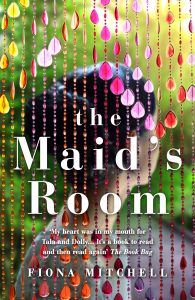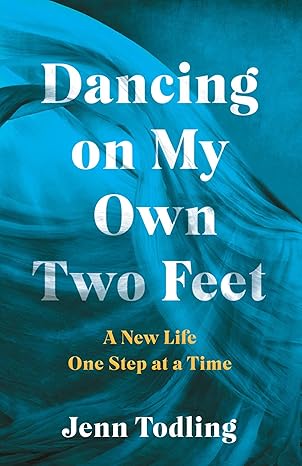Should You Write What You Know?
 I’ve never written about what I really know. As a journalist, I didn’t know what it was like to be held hostage, or to be homeless, but I wrote about those subjects anyway. I wrote of happier things too – a woman who gave birth to twins after seven rounds of IVF, a weird form of meditation which involved plonking a triangular box on my head and humming. I didn’t know what any of these things were like, but I did my research and asked people questions. And in the case of the meditation feature, I went along to a class and tried it out – I’ve still got the triangular hat to prove it.
I’ve never written about what I really know. As a journalist, I didn’t know what it was like to be held hostage, or to be homeless, but I wrote about those subjects anyway. I wrote of happier things too – a woman who gave birth to twins after seven rounds of IVF, a weird form of meditation which involved plonking a triangular box on my head and humming. I didn’t know what any of these things were like, but I did my research and asked people questions. And in the case of the meditation feature, I went along to a class and tried it out – I’ve still got the triangular hat to prove it.
Starting a novel then Stopping
In between all of this, I had several aborted attempts at writing novels. Most of these brief pieces – I only got as far as the first chapter – were about something I knew all too well.
When I was 13, a girl in my class tried to stab one of our teachers. Blood poured from the 10-inch blade as the teacher closed her hand around it to defend herself. Someone ran for help; another teacher came into the classroom and pulled the knife away. We were sent home. The girl didn’t come back to school and neither did the teacher. I later found out the teacher lost the use of two of her fingers.
This I knew: the slow-motion unfolding of something traumatic, the buzzing in my ears, the churning thought: just why did she do it? (We weren’t offered counselling).
But whenever I tried to translate this experience into fiction, it bored me. I’d gone over that event so many times in my head that there was nowhere left to go with it. I couldn’t write what I knew; perhaps I didn’t want to.
If I was going to spend years writing a book, I wanted it to transport me some place else; I wanted it to be uplifting, funny even.
Getting beyond the First Chapter
It was only when I moved to Singapore in 2009 that the urge to write fiction struck again. I listened as women employed as domestic helpers told me their stories. Many of them had left their children back home in countries such as the Philippines and Myanmar. Some rarely had a day off – they weren’t legally entitled to one back then. They shared how their passports were locked away, and how, if they fell pregnant, they’d be deported.
I did reams of research – reading about court cases where employers faced charges of abusing their maids, looking at an anonymous blog where someone was naming and shaming maids by posting their photographs online. I looked at law and human rights websites too.
Then I set to work. The Maid’s Room centres around the lives of over-worked, underpaid maids in Singapore who decide to fight back and try to change their lives.
The Power of Empathy
My research helped me, of course it did, but what really breathed life into my characters was all that we have in common. Emotions such as fear, anger, a striving to make our lives better, the ability to laugh. And that shock that I felt all those years ago standing in that classroom, I drew on that too.
My own emotions and experiences may have provided a way into the story, but after that I had to do a hell of a lot of learning. Just what is it like to leave your children at home and not see them again for another three years? How did you feel when the family you were working for didn’t give you enough to eat?
I learned a lot about what it’s like to be a domestic helper, but still I’m no authority; I’m just one small voice. And with an estimated 67 million people working as domestic helpers around the world, there are many more voices out there. Indeed the charity Home which offers counselling and legal aid to migrant workers in Singapore is currently crowdfunding a book of stories by domestic helpers. And there are other writers creating other books about domestic helpers too.
So write what you know? That approach doesn’t work completely for me. I’d rather listen and learn, and if it’s a story worth telling, then I’ll start to type.
Fiona’s top tips for writing what you don’t know:
1 Get researching. So you’ve got an incredible idea, but don’t quite know how to execute it. Research pays. Find people in the know to interview, get on-line and read true-life stories.
2 Trust in the power of empathy. Feel it, whatever it is, and write it – that way your story will be one that matters to people. Marry up what you know with what you don’t. So you’ve never been stranded at the side of a mountain having just lost a leg? So what; think about how you felt when you were most scared, most desperate and write.
3 If the characters aren’t deep enough, change them up. Shut your novel and open a fresh page. Write a free-flow character analysis in the voice of your character: do they prefer tea or coffee? What is their most annoying habit? Have they got any nervous ticks? Doing this will help to untrap you.
4 Set the scene. Close you eyes and imagine where your character is. Can’t quite see it? So open up Pinterest and search for some evocative photographs.
—
Fiona Mitchell is an award-winning writer and worked as a journalist for twenty years. She spent almost three years living in Singapore and now lives in London with her husband and daughter. The Maid’s Room, published by Hodder & Stoughton on 16th November 2017, is her first novel. She is currently working on a second, and blogs at https://fionamitchell.org
Follow her on Twitter: https://twitter.com/FionaMoMitchell
Facebook: https://www.facebook.com/FionaMitchellAuthor/
And Instagram: https://www.instagram.com/fionamomitchell/
—
THE MAID’S ROOM by Fiona Mitchell
 ‘This is where she sleeps. A cupboard. A bedroom. A windowless box.’
‘This is where she sleeps. A cupboard. A bedroom. A windowless box.’
Sisters Dolly and Tala have never felt further from home. In the blistering heat of Singapore, they spend their days enabling ex-pats to have lives they could never afford for themselves.
Even though she has little freedom, Dolly can just about live with her job if it means she’s able to support her beloved young daughter back in the Philippines. One day – if she’s lucky – Dolly may even be able to go back and see her.
Tala, however, just can’t keep her mouth shut about the restrictive, archaic rules maids are forced to abide by on pain of deportation. She risks everything to help her fellow maids, who have struggled to have their voices heard for far too long.
In a world where domestic workers are treated so poorly, The Maid’s Room explores how women can come together to change each other’s lives, and be the architects of their own futures.
Category: Contemporary Women Writers, How To and Tips




























